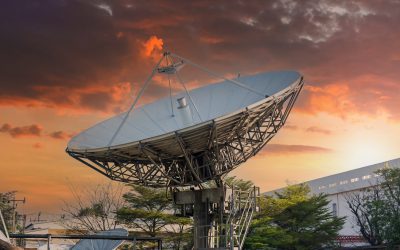In the world of amateur radio, being prepared for emergencies is paramount. A Ham Radio Go-Kit is an essential tool for any ham radio operator, especially when natural disasters or unexpected events strike. This blog post will guide you through the process of building a Ham Radio Go-Kit for emergency preparedness, ensuring you are ready to provide critical communication support when it is needed most.
Understanding the Importance of a Ham Radio Go-Kit
A Ham Radio Go-Kit is a portable collection of equipment and supplies designed to enable effective communication in emergency situations. When traditional communication networks fail, ham radio operators often step in to bridge the gap, providing vital links for emergency services and affected communities. Having a well-prepared Go-Kit ensures that you can quickly and efficiently set up a communication station, regardless of the location or circumstances.
Essential Components of a Ham Radio Go-Kit
Radio Equipment
Primary Transceiver
The heart of your Ham Radio Go-Kit is the transceiver. Choose a reliable, multi-band transceiver capable of operating on VHF and UHF frequencies. Popular models include the Yaesu FT-857D and Icom IC-706MKIIG, which offer robust performance in a compact form.
Handheld Radios
In addition to a primary transceiver, include at least one handheld radio (HT) for mobility and redundancy. Models like the Baofeng UV-5R and Yaesu FT-60R are affordable and versatile options.
Power Sources
Battery Packs
Reliable power is crucial for uninterrupted communication. Incorporate high-capacity rechargeable battery packs, such as LiFePO4 batteries, which offer long life and stable performance. Ensure you have sufficient battery capacity to last through extended operations.
Solar Panels
Solar panels are excellent for recharging batteries during prolonged emergencies. Portable solar panels, like those from Goal Zero, can keep your equipment powered even in remote locations.
Power Cables and Connectors
Include a variety of power cables and connectors to ensure compatibility with different power sources. Anderson Powerpole connectors are a popular choice for their reliability and ease of use.
Antennas and Accessories
Portable Antennas
A good antenna is vital for effective communication. Consider packing a multi-band portable antenna, such as a roll-up J-pole or a collapsible Yagi antenna, which can be quickly deployed in the field.
Coaxial Cables
Include high-quality coaxial cables of various lengths to connect your radio to the antenna. RG-58 and RG-8X cables are commonly used for their balance of performance and flexibility.
Antenna Mounts and Supports
Depending on your deployment environment, you may need antenna mounts or supports. Items like tripods, telescopic masts, and bungee cords can help you set up antennas quickly and securely.
Accessories and Tools
Microphones and Headsets
Pack a backup microphone and a noise-cancelling headset to ensure clear communication in noisy environments. Headsets with built-in microphones can free up your hands for other tasks.
Logging Tools
Maintaining accurate communication logs is essential. Include a notebook, pens, and a portable digital device, such as a tablet with logging software, to keep track of contacts and messages.
Multi-Tool and Basic Hand Tools
A multi-tool and basic hand tools, such as pliers, screwdrivers, and wrenches, are invaluable for making on-the-fly repairs and adjustments to your equipment.
Emergency Supplies
First Aid Kit
Safety comes first. Include a comprehensive first aid kit with bandages, antiseptics, pain relievers, and other medical supplies.
Personal Essentials
Pack items like water, non-perishable food, a flashlight, extra batteries, and a space blanket to ensure your personal well-being during deployments.
Organizing Your Ham Radio Go-Kit
Storage Solutions
Backpack or Case
Choose a durable, weather-resistant backpack or case to store and transport your Ham Radio Go-Kit. A backpack allows for hands-free carrying, while a hard case offers extra protection for your equipment.
Compartments and Pouches
Organize your gear with compartments and pouches to keep everything accessible and secure. Label each section to make it easy to find items quickly.
Weight Management
Prioritize Essentials
While it’s tempting to pack everything, prioritize essential items to keep your Go-Kit manageable. Regularly review and update your kit to ensure it meets your current needs without unnecessary weight.
Balance Load
Distribute the weight evenly to avoid strain during transport. Heavier items should be placed at the bottom of the backpack or case to maintain balance.
Preparing for Deployment
Regular Drills
Practice Setup
Conduct regular drills to practice setting up your Ham Radio Go-Kit. Familiarity with your equipment and setup process ensures you can deploy quickly and efficiently during an actual emergency.
Simulate Scenarios
Simulate different emergency scenarios to test your Go-Kit’s effectiveness. Identify any weaknesses or missing items and make necessary adjustments.
Maintenance and Updates
Equipment Checks
Perform regular checks on your equipment to ensure everything is in working order. Charge batteries, test radios, and inspect cables and connectors for wear and tear.
Update Components
Technology and needs change over time. Periodically update your Go-Kit components to incorporate newer, more efficient equipment and supplies.
Effective Communication Strategies
Frequency Planning
Pre-Programmed Frequencies
Pre-program your radios with common emergency frequencies, local repeaters, and simplex channels. This saves time and ensures you can quickly establish communication.
Coordination with Local Groups
Coordinate with local amateur radio groups, emergency services, and community organizations to align on common frequencies and communication protocols.
Message Handling
Standard Operating Procedures
Develop and follow standard operating procedures for message handling, including prioritizing messages, maintaining logs, and using clear, concise language.
Use of Tactical Call Signs
Use tactical call signs for efficient communication. This helps avoid confusion and ensures that messages are directed to the correct individuals or groups.
Building a Ham Radio Go-Kit for emergency preparedness is an invaluable investment for any ham radio operator. With the right equipment, organization, and preparation, you can provide critical communication support during emergencies, helping to keep your community safe and connected. Remember, regular drills and maintenance are key to ensuring your Go-Kit is always ready for deployment. By following the guidelines in this post, you’ll be well-equipped to handle any situation that arises, showcasing the importance and capabilities of amateur radio in times of need.




